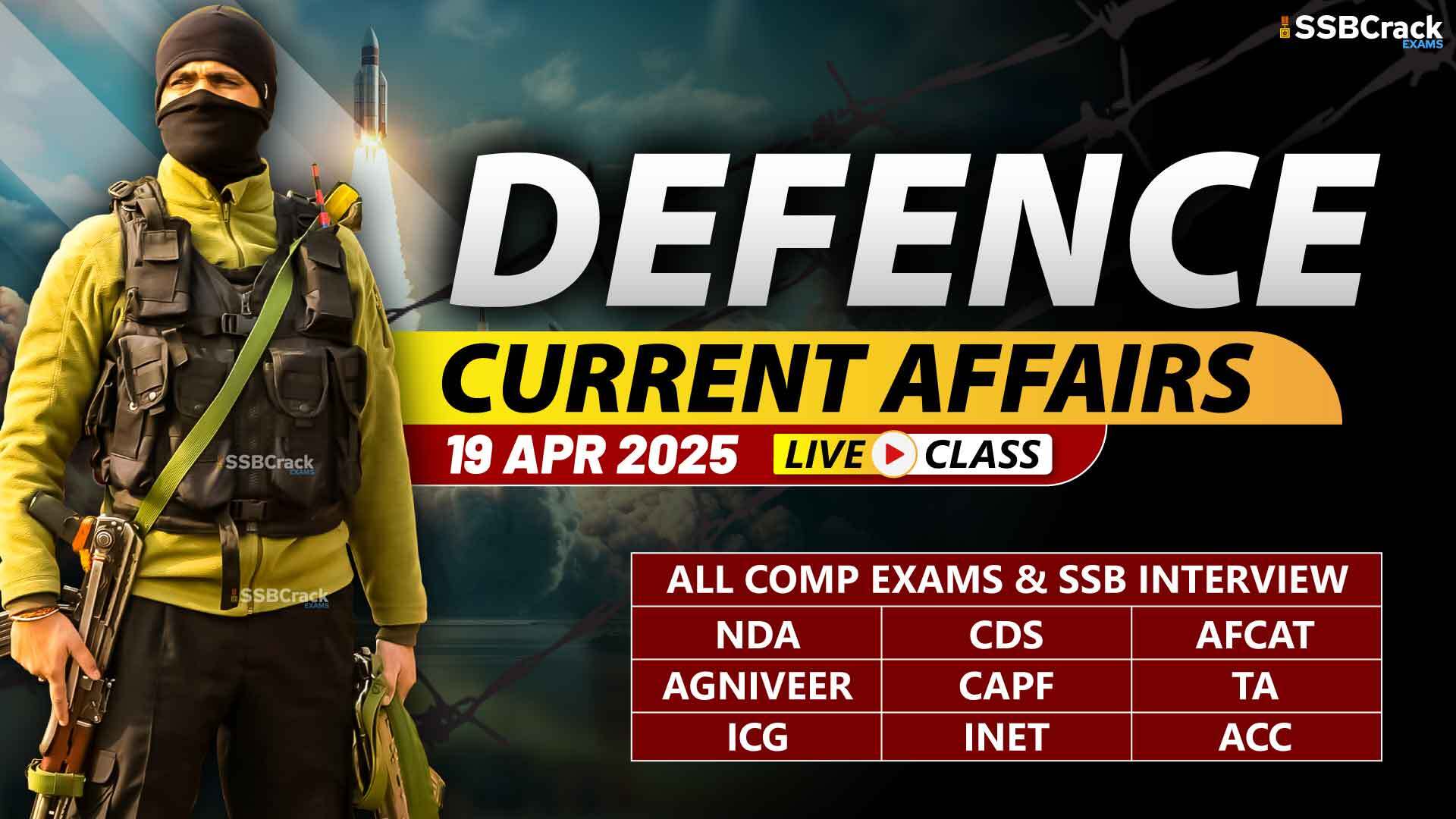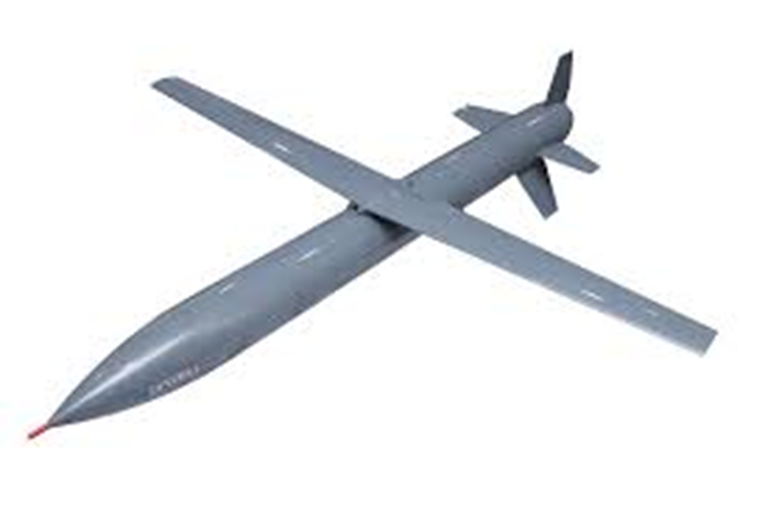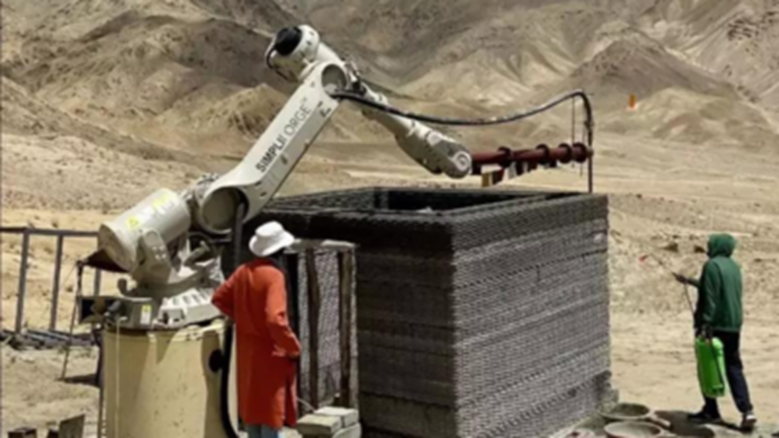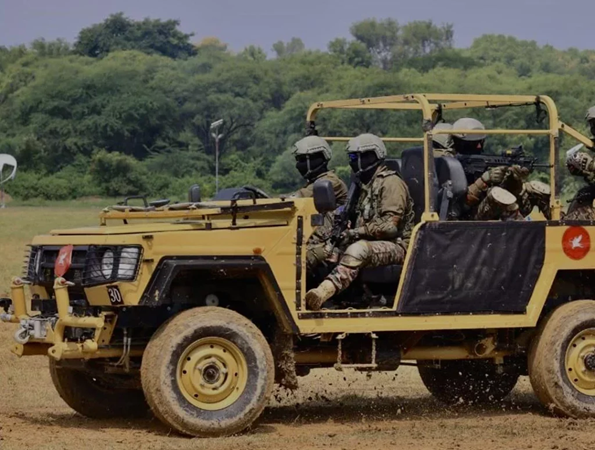In Defence Current Affairs for DCA 19 April 2025, we will see the latest national and international current affairs news. These important current affairs will be beneficial for your upcoming NDA, CDS, CDS OTA, AFCAT, TA, Agniveer Army, Agniveer Navy, Agniveer Air Force, Women Military Police, INET, MNS, ACC exams, SCO, PCSL, CAPF, and SSB interviews, and direct entries for Army, Navy, and Air Force like SSC Tech, TGC, JAG, NCC, TES, 10+2 Cadet. Download a PDF file about current events at the end of this article. Let us now see the Daily Defence Current Affairs.
Defence Current Affairs 19 April 2025
JSR Dynamics Long Range Glide Bomb
- The Long-Range Glide Bomb (LRGB), developed by JSR Dynamics Pvt. Ltd., represents a significant advancement in India’s indigenous precision strike capabilities.
- This comprehensive analysis examines the technical specifications, integration with the Su-30MKI platform, recent testing milestones, and strategic implications of this advanced weapons system.
- JSR Dynamics, founded in 2018 under India’s ‘Atmanirbhar Bharat’ initiative, has established itself as a pioneering Indian defence company specialising in the research, development, and production of airborne guided weapon systems.
- The LRGB is designed as an All-Up Round (AUR) system specifically engineered to extend the operational range of the MK-80 series warheads, providing significant tactical advantages to the Indian Air Force (IAF).
- The LRGB system comes in multiple variants with different specifications tailored to specific mission profiles. These include the K-1260 (1350 kg weight class), K-720 (720 kg weight class), K-450 (540 kg weight class), and K-243 (300 kg weight class).
- The LRGB ‘Gaurav’ variant tested in these trials is classified as a 1,000 kg class glide bomb, placing it between the K-1260 and K-720 variants in JSR Dynamics’ product line-up.
Kuwait Backs India For UN Security Council Seat
- Kuwait has publicly expressed its support for India’s bid for a permanent seat on the United Nations Security Council (UNSC), marking a significant endorsement amid ongoing global discussions about UNSC reform.
- Tareq Albanai, Kuwait’s Permanent Representative to the United Nations and Co-Chair of the Intergovernmental Negotiations on Security Council reform, emphasised India’s status as a “main player on the world stage” during a press briefing on the current status of negotiations within the UN General Assembly.
- Albanai highlighted that any expansion of the Security Council—from its current 15 members to potentially 21 to 27 members—would make India a strong contender for a permanent seat, subject to the consensus of the broader UN membership, which comprises 193 countries.
- Support from countries like Kuwait and France, along with others such as the United States, United Kingdom, Russia, and members of the Asia-Pacific group, underscores India’s growing influence and the increasing recognition of the need to reform the UNSC to reflect 21st-century realities.
Gujarat Becomes 1st Indian State To Launch Spacetech Policy
- Gujarat has made a landmark move by becoming the first Indian state to launch a dedicated SpaceTech Policy for the period 2025-2030.
- This policy is designed to catalyse the growth of the space technology sector in the state through a comprehensive framework of fiscal and non-fiscal incentives, aiming to position Gujarat as a national leader in space innovation and manufacturing.
- The SpaceTech Policy 2025-2030 encompasses support for the entire space sector value chain, including the manufacturing of satellite payloads and parts, communication and propulsion systems, ground stations, satellite control centres, and the design of space-based applications.
- This policy is set against the backdrop of national reforms, including the opening up of the space sector to private participation in 2020 and the introduction of the Indian Space Policy 2023, which encourages FDI and comprehensive private sector engagement across all space activities.
Printed Military Bunker At 11,000 Feet
- In a landmark technological achievement, India has set a new global record by constructing the world’s highest on-site 3D printed military bunker at an altitude of 11,000 feet in Ladakh.
- This pioneering project was executed by Simpliforge Creations, in partnership with IIT Hyderabad and the Indian Army, under the initiative called Project PRABAL.
- The bunker was completed in just five days, with a total printing time of 14 hours, utilising a specially engineered concrete mix capable of withstanding the extreme conditions of high altitude, low oxygen, sub-zero temperatures, and intense UV radiation.
- The 3D printing process was highly efficient: the robotic printer system was set up within 24 hours, and the structure was printed on-site using locally sourced materials. This rapid deployment capability is a major advantage, enabling swift construction of critical infrastructure in remote and strategically sensitive areas.
- The bunker, designed with advanced geometric features for enhanced ballistic and blast protection, has successfully undergone rigorous field trials, including tests against direct tank fire, demonstrating its robustness and operational viability.
DRDO’s 6.8mm Assault Rifle Prototype
- In early 2025, India’s Defence Research and Development Organisation (DRDO) unveiled a promising new 6.8x43mm assault rifle prototype, marking a significant advancement in the nation’s indigenous small arms capabilities.
- This development represents a potential game-changer for the Indian Army’s firearm inventory, strategically positioning itself between the currently imported SIG716 rifles and the stalled AK-203 production plan.
- The prototype, developed by the Armament Research and Development Establishment (ARDE) in Pune, features modern elements including a polymer magazine with metal reinforcements and a telescopic stock.
- In 2019, DRDO officials held discussions with Textron, a Texas-based ammunition company, regarding possible collaboration on 6.8mm cartridge development under the Defence Technology and Trade Initiative (DTTI) between India and the United States.
- DRDO had previously experimented with multi-calibre weapon systems. The Multi Calibre Individual Weapon System (MCIWS), designed to fire 5.56mm, 7.62mm, and 6.8x43mm special purpose cartridges by changing the barrel and magazine, was rejected by the Army in 2013-2014.
- The current prototype represents a revival and evolution of these earlier efforts, now presented as a dedicated 6.8x43mm platform rather than a multi-calibre system. The timing is particularly significant as it follows DRDO’s 2024 launch of the 7.62x51mm ‘Ugram’ rifle.
Why Indian Army Prefers Force Motors Gurkha
- The Indian Army’s preference for the Force Gurkha over the Mahindra Thar, Bolero, and Maruti Jimny is rooted in a blend of operational practicality, historical reliability, and strategic alignment with military needs.
- The Force Gurkha is powered by a robust 2.6L diesel engine derived from Mercedes-Benz, known for its durability and consistent performance in extreme conditions, such as high-altitude, low-oxygen environments that are common in India’s border regions.
- This engine, coupled with the Gurkha’s minimal electronic complexity, ensures that the vehicle can be easily serviced and repaired in the field—a crucial requirement for military operations where access to sophisticated repair infrastructure is limited.
- The Gurkha’s all-terrain capability is another decisive factor. Its tank-like build, high ground clearance, and modular interior allow it to traverse challenging landscapes, carry more equipment (with a 500-litre boot compared to the Jimny’s 208 litres), and be adapted for specific military tasks, from troop transport to reconnaissance.
Multiple Choice Questions of DCA
- What is the significance of the 3D printed bunker constructed in Ladakh?
A. It is the first underground bunker in India
B. It is the world’s largest bunker by area
C. It is the world’s highest on-site 3D printed military bunker
D. It was constructed by the Indian Air Force
ANSWER: C - Which organization partnered with the Indian Army and IIT Hyderabad for
Project PRABAL?
A. DRDO
B. Simpliforge Creations
C. ISRO
D. Bharat Electronics Limited
ANSWER: B - What notable first did Gujarat achieve in the space technology sector?
A. Launched its own satellite
B. Became the first state to have a space launch pad
C. Became the first state to launch a dedicated SpaceTech Policy for 2025–2030
D. Established the first state-run space research university
ANSWER: C - What is the classification of the ‘Gaurav’ variant of the Long Range Glide Bomb
(LRGB)?
A. 500 kg class glide bomb
B. 800 kg class glide bomb
C. 1,000 kg class glide bomb
D. 1,500 kg class glide bomb
ANSWER: C - Why has the Indian Army preferred the Force Gurkha over vehicles like
Mahindra Thar, Bolero, and Maruti Jimny?
A. Because it is cheaper than others
B. Due to its stylish design
C. For its operational practicality and historical reliability
D. Due to availability in international markets
ANSWER: C - Op Ajay Launched By Bharat To Rescue People From
A. USA
B. Israel
C. UK
D. Iran
ANSWER: B - DGAQA Stands For
A. Directorate General of Aeronautical Quality Assurance
B. Directorate General of Aeronautical Query Assurance
C. Directorate General of Aeronautical Quality Assured
D. None
ANSWER: A - Ex AL NAGAH, NASEEM-AL-BAHR, Ex EASTERN BRIDGE Conducted b/w India &
A. Qatar
B. Oman
C. UAE
D. Maldives
ANSWER: B - The Douglas C-47 Skytrain or Dakota Is A
A. UAV
B. Military Transport Aircraft
C. Fighter Aircraft
D. None
ANSWER: B - Infantry Day Is Always Observed On
A. 26 Oct
B. 27 Oct
C. 28 Oct
D. 29 Oct
ANSWER: B - PBG The Oldest Regiment In The Indian Army, Having Been Raised In
A. 1773
B. 1774
C. 1779
D. None of the above
ANSWER: A - INSAS Rifle Manufactured By
A. ARDE
B. HAL
C. IAI
D. ISRO
ANSWER: A - ISRO Hq Is In
A. Mumbai
B. Kochi
C. Chennai
D. Bangalore
ANSWER: D - Brahmos Is A
A. Hypersonic Cruise Missile
B. Supersonic Cruise Missile
C. Subsonic Cruise Missile
D. Ballistic Missile
ANSWER: B - Where Is The Hq Of The Central Command of The Indian Army?
A. Kochi
B. Vishakhapatnam
C. Pune
D. Lucknow
ANSWER: D - Sarmat Missile Is A
A. Nuclear-Capable Missile
B. Cruise Missile
C. Submarine Launched Ballistic Missiles
D. None
ANSWER: A - “The Broken Earth” Book Written By
A. Shashi Tharoor
B. N.K. Jemisin
C. Hew Strachan
D. Philip Pullman
ANSWER: B - What Is The Capital Of Nigeria?
A. Oslo
B. Abuja
C. Cape Town
D. Warsaw
ANSWER: B - Ex ‘Ajeya Warrior’ conducted b/w India &
A. Qatar
B. Oman
C. UAE
D. UK
ANSWER: D - Operation Ganga Was Conducted By IAF In
A. UK
B. USA
C. Ukraine
D. Afghanistan
ANSWER: C
ALSO READ:
- Latest Daily Current Affairs and Defence Updates
- Monthly Defence Current Affairs March 2025 [DOWNLOAD PDF]
- Monthly Defence Current Affairs February 2025 [DOWNLOAD PDF]
- Monthly Defence Current Affairs January 2025 [DOWNLOAD PDF]
- Defence Current Affairs Year End Review 2024
- Monthly Defence Current Affairs November 2024 [DOWNLOAD PDF]
- Monthly Defence Current Affairs October 2024 [DOWNLOAD PDF]
- Monthly Defence Current Affairs September 2024 [DOWNLOAD PDF]
- Monthly Defence Current Affairs August 2024 [DOWNLOAD PDF]
- Monthly Defence Current Affairs July 2024 [DOWNLOAD PDF]
- Monthly Defence Current Affairs June 2024 [DOWNLOAD PDF]
- Monthly Defence Current Affairs May 2024 [DOWNLOAD PDF]
- Monthly Defence Current Affairs April 2024 [DOWNLOAD PDF]
- Monthly Defence Current Affairs March 2024 [DOWNLOAD PDF]


























